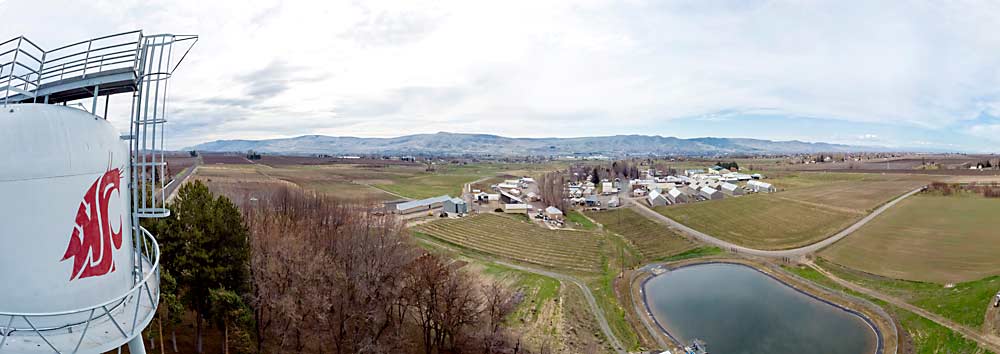
It costs a lot more to plan an apple orchard today than it did 20 years ago — a fact growers know well — but university research orchards are now stuck trying to do more with less, as funding is cut or simply fails to keep pace with rising costs.
That’s a challenge for all the land grant universities as they look at the expense of running the research farms and managing the lands that make the land grant mission possible. It’s especially challenging for permanent crops such as tree fruit and wine grapes, which require long-term funding beyond the typical grant life cycle.
“The fact is that we are not potatoes. We do have to have committed orchards to answer questions, and that takes five to 10 years. So, maintaining that research funding over time is imperative and we all know these are capital intensive crops,” said Jim McFerson, director of the Washington State University Tree Fruit Research and Extension Center in Wenatchee, Washington. “The overall story is of significantly decreasing state support, and I certainly think we are approaching a crisis situation with many crops, not just tree fruit.”
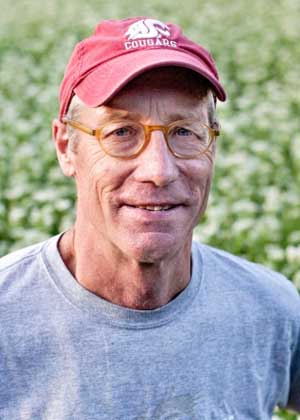
To understand the new normal for research farm funding, Good Fruit Grower talked to deans, directors and researchers at a handful of the best institutions serving the tree fruit and wine grape industries.
Comparisons, of course, would be like comparing apples to peaches or potatoes, but several broad themes emerged: more reliance on grant funding means more uncertainty about the long-term plans for permanent crops; in many cases industry groups are stepping up to support infrastructure; and a backlog of maintenance at research and extension centers is reaching dire levels.
The shifting foundation of funding is not a new concern. Even back in 1995, the authors of “Colleges of Agriculture at the Land Grant Universities: A Profile” noted that private funding from commodity groups was growing to fill a larger wedge of the research pie as federal support waned and shifted more toward competitive grants.
Since then, state funding has also taken a hit, with base funding for research and extension centers down by as much as 50 percent in some states since the 2008 recession.
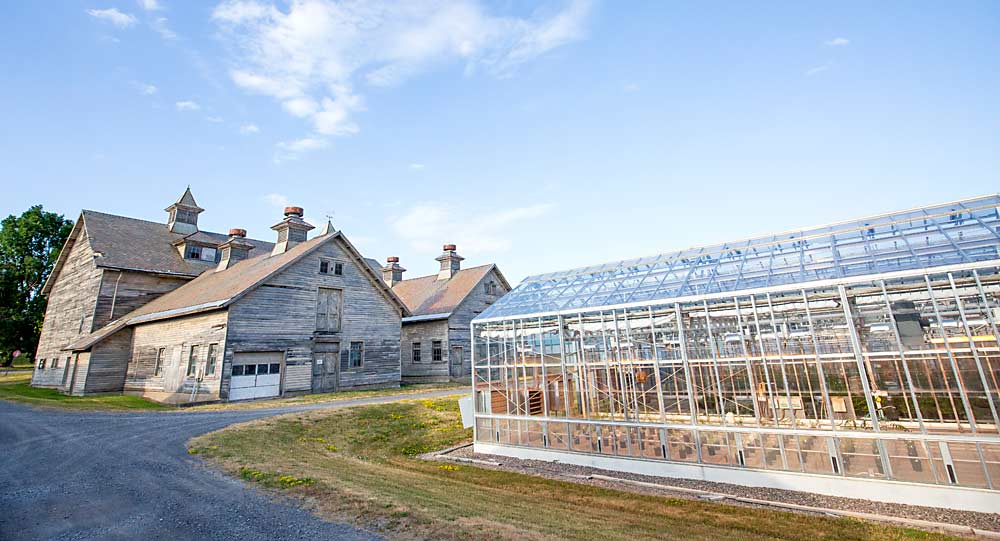
“If you look at the broad picture of funding for food and agriculture, as a nation, we are not investing what we should be investing,” said Jan Nyrop, director of Cornell University AgriTech, formerly known as the New York State Agricultural Experiment Station in Geneva.
New opportunities do exist, such as the recent $69 million investment from the U.S. Department of Agriculture in a new grape genetics lab at AgriTech, which is home to federal and university researchers.
That partnership puts AgriTech in a strong position for robust research, Nyrop said, but “I also think what’s happening is that in many places, state and local funding is stepping up, primarily directed at economic growth.”
Grant funding vs. permanent crops

Grant funding now forms the foundation of many research programs, as base funding from states and federal operating funds from the Hatch Act, which created state agricultural experiment stations in 1887, are cut or shifted toward competitive grant opportunities.
The challenge is that grant funding, often on just a three- or, at most, five-year basis, isn’t designed for sustaining long-term management of permanent crops.
“You can’t plant an orchard or a vineyard each time you get a grant to do the work; you need that laboratory ready,” Nyrop said. So, a share of every grant researchers receive at AgriTech goes toward operations and maintenance.
“In very broad strokes, users of farm research facilities cover about 30 to 35 percent of the total costs of providing these living laboratories,” Nyrop said. University funds from the state and federal capacity funds cover the rest.
Similar user-rate structures, often known as plot fees, are common at research and extension centers. At WSU-Wentachee, the fees are tiered, depending on how much support the research project needs, McFerson said. Ideally, faculty would share orchards to keep costs down, but it’s harder than you’d think.
“No one really wants pathologists to inoculate fire blight in Stefano (Musacchi)’s new training system trials,” he said.
Not everyone uses plot fees.
At Virginia Tech’s research and extension center in Winchester, the cost of maintaining all the orchards and vineyards on the 124-acre farm lies with the researcher who put in or inherited the planting.
“If a tractor is driving over it, the payment is the responsibility of that PI (principal investigator),” said center director Tony Wolf. This simplifies the center’s budget but limits the ability to make long-term investments, and state funds available for research equipment such as microscopes don’t typically include farm equipment. “If the tractor breaks, we pass the hat around the faculty,” he said.
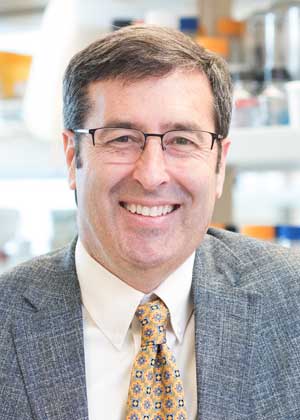
At the University of Idaho, there’s a plot fee structure at all nine of the university’s research farms, except the orchards in Parma.
That’s because the university looked to cut costs by closing the center during the recession in 2008, but the cherry, apple and grape industries came forward with the funding to keep it running until the state could afford to again, said Mark McGuire, associate dean for research and director of the Idaho Agricultural Experiment Station.
“The industry has phased out their contribution to the direct orchard and vineyard support, but I feel confident that if we had a need arise, they would help us again,” he said.
Similarly, Michigan State University no longer charges plot fees on grants from the different tree fruit commodity groups, to help the industry money go further on specific research questions, said Doug Buhler, director of AgBioResearch at MSU.
It’s a way of thanking those groups for stepping up to help fund farm infrastructure through the Michigan Tree Fruit Research Commission, created in 2014 to save a research and extension center from closing.
Not every funding agency is willing to cover those farm maintenance costs, either.
“It’s a bit of a Catch-22. I’ve had grants declined because we are too expensive since we need to maintain the vineyards to do the research in the first place,” said Markus Keller, viticulturist at WSU’s Irrigated Agriculture Research and Extension Center in Prosser.
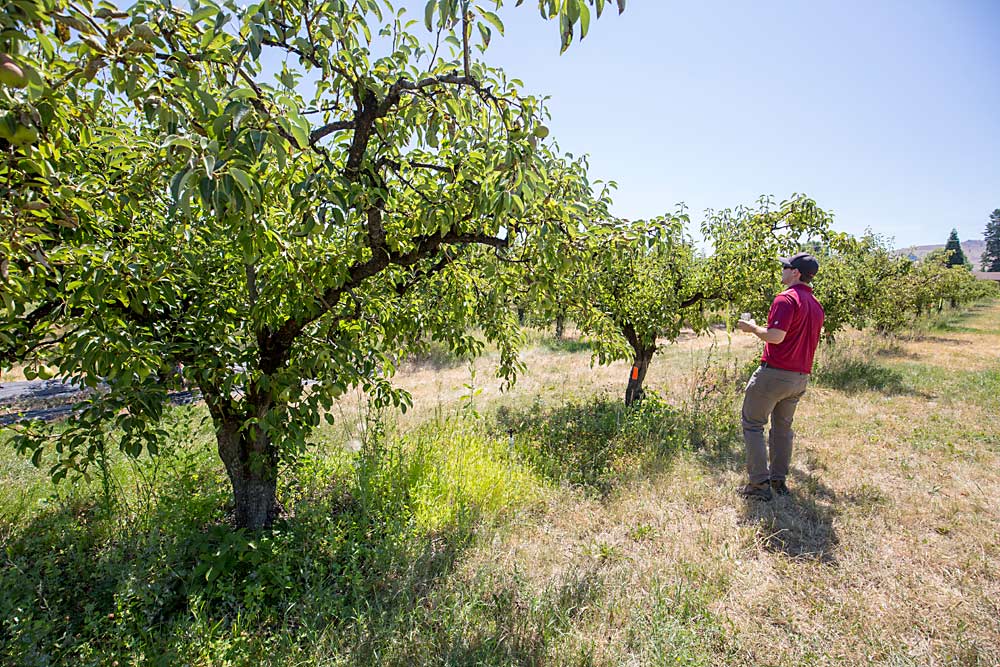
Just sell the fruit
The idea that research farms can support themselves by selling fruit, as commercial orchards do, gets mixed reviews — no one claims that research is profitable, but some say fruit sales make a significant contribution and others say it’s not worth the trouble.
While selling juice grapes from research blocks brings in some cash, on the wine side it just doesn’t work, Keller said.
“We have like 30 different varieties in very small blocks in experiments that require us to harvest at different times,” he said. “We’re unable to find someone who will buy them in bulk, and it’s extremely cost ineffective to sell them 50 pounds at a time.”
It’s similar in Wenatchee, located in the heart of the tree fruit industry but far from WSU’s main campus in Pullman.
“In the old days, there used to be some intention to sell fruit, but it was never for cost recovery,” McFerson said. “We’re not making money on our orchards; we want them devoted to research.”
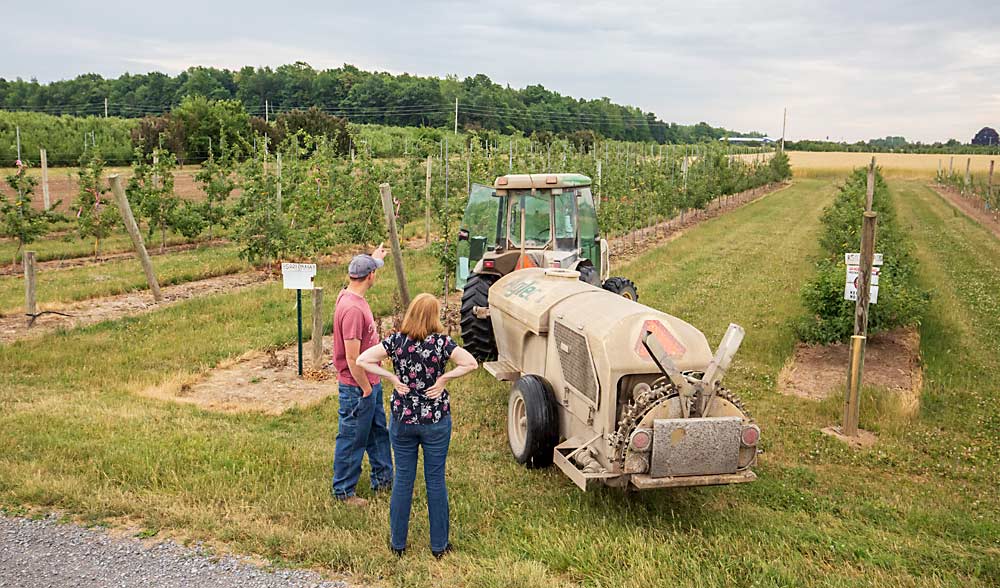
But the on-campus farm market at Cornell does a brisk business in the saleable fruit from research farms, and local wineries buy the grapes.
“That doesn’t generate a profit at all, but it allows you to recover some of the costs of keeping blocks in such a state for if the experiment need arises,” Nyrop said.
Crop sales also help to fund the maintenance of orchards that are not currently being used for research at the University of California’s Kearney Agricultural Research and Extension Center, but it’s not enough, said Mark Lagrimini, vice provost of research and extension for the University of California, Division of Agriculture and Natural Resources.
“These various citrus and small fruit orchards are kept in case there is an unexpected need, such as a disease or insect pest,” he said in an email.
“However, many years of flat budgets from the state has forced us to increase researcher fees to cover a larger portion of the costs. We are currently at a point where we must decide if we need to remove the orchards. It would be a good time to approach the commodity groups to fund the maintenance of these orchards.”
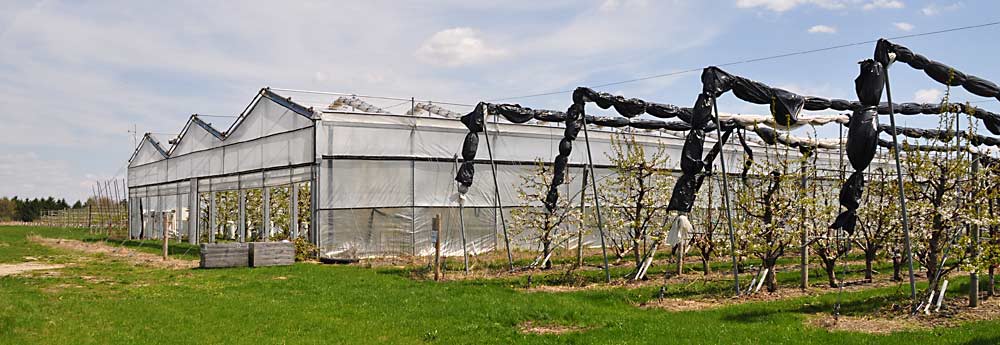
Industry investment
From the constant flow of research field days, conference talks and published papers, it would seem that all is working well at university research farms, but decades of deferred maintenance and investment are starting to catch up with many facilities.
“The university is no different than farmers: When we don’t make money, we pull back on capital investment. That’s what was happening,” said Jim Nugent, a tart cherry grower and former MSU extension horticulturist who chairs the Michigan Tree Fruit Commission.
Created by apple, cherry, peach and plum growers in 2014, the commission has raised more than $5 million for infrastructure improvements at MSU research farms.
“The reality is that as industries, we’re going to have to do more for ourselves,” Nugent said. “I think of this as seed money to keep the industry as a priority. The university is a huge partner for us and we’re trying to keep them in a more competitive position to bring in the larger, external funding that our checkoff programs can’t afford.”
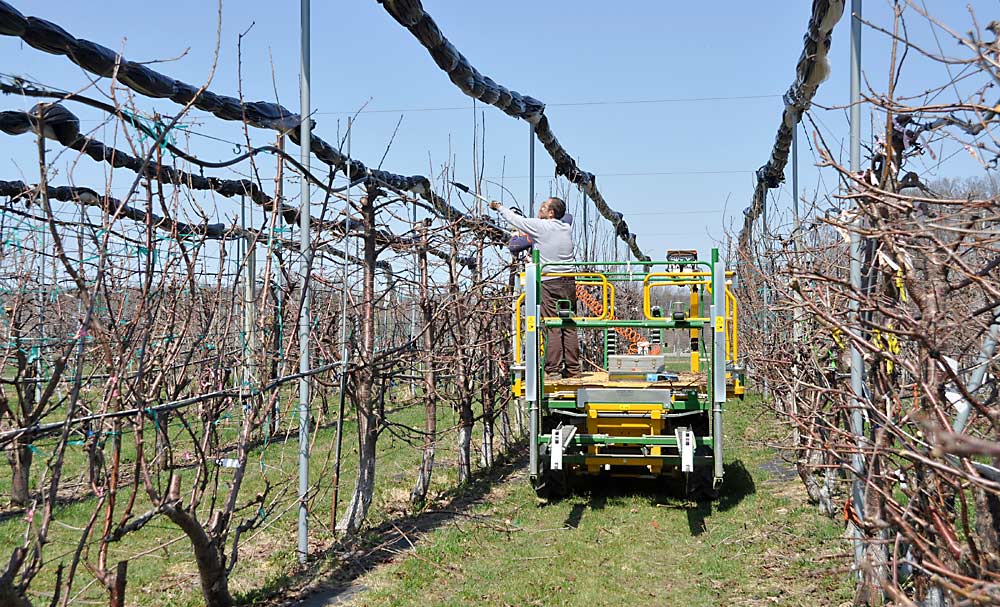
Washington state growers were thinking similarly when they set up an endowment worth over $32 million in 2013. Most will go toward endowed chair faculty positions and their research programs, along with extension faculty, but $8 million or so is earmarked for infrastructure needs.
To figure out how best to spend that money, WSU-Wenatchee started with a planning process to figure out all the farm, lab and facility upgrades needed, and then prioritized.
“It’s far more than we could ever possibly pay for, but anything on that list would contribute to our efficient and effective operations,” McFerson said. “We’ve got the world’s best tree fruit industry; we’d like to have the world’s best tree fruit research center.”
At the moment, he thinks faculty are attracted to WSU for the opportunity to work with those industry partners.
“We do have that good fortune to have such great industry collaborators and that is the reason, I believe, we’ve been able to attract and retain world-class researchers. It’s not our facilities,” McFerson said.
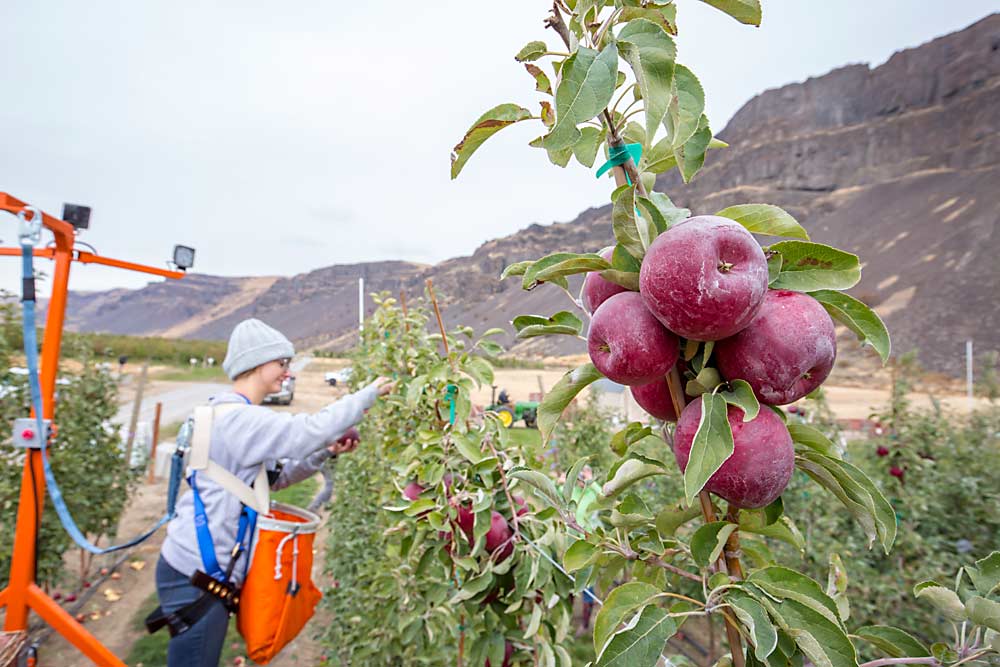
The University of Idaho also has a grand plan to reinvest in agricultural research infrastructure statewide. It’s a vision promoted by College of Agricultural and Life Sciences Dean Mike Parrella, who has worked with the university, state lawmakers and industry partners to develop a plan to invest about $25 million in research and extension centers.
“Agriculture is a driving force for our economy and the state Legislature is really starting to understand that,” McGuire said. “As Dean Parrella likes to say, ‘It’s hard to recruit early-career faculty when the microscopes are older than they are.’”
The industry groups who banded together to support the Parma orchards have teamed up with a wider group of the state’s commodity crops, he said. “We’ve always had fairly good industry support. This is a way to engage all of them and bring the entire enterprise to the 21st century.”
In Idaho, Michigan and New York, growers have successfully used their own fundraising to lobby lawmakers to reinvest in agricultural research and education as government recovers from the recession.
In Michigan, diverse agricultural producers teamed up to support Project GREEEN, a competitive state-funded grant program that’s ready to tackle critical research questions, such as controlling spotted wing drosophila, more quickly than waiting for federal grants.
“We don’t have something like the Washington apple industry, but collectively, the plant coalition has been very strong,” Buhler said.
“Every state is different, the industries are different, the politics are different, but I believe that there are innovative ways to bring these resources together. Industries that realize that things have changed and can figure out how to help us is really critical.” •
—by Kate Prengaman
Related: Michigan Tree Fruit Commission renews MSU infrastructure funding






Leave A Comment